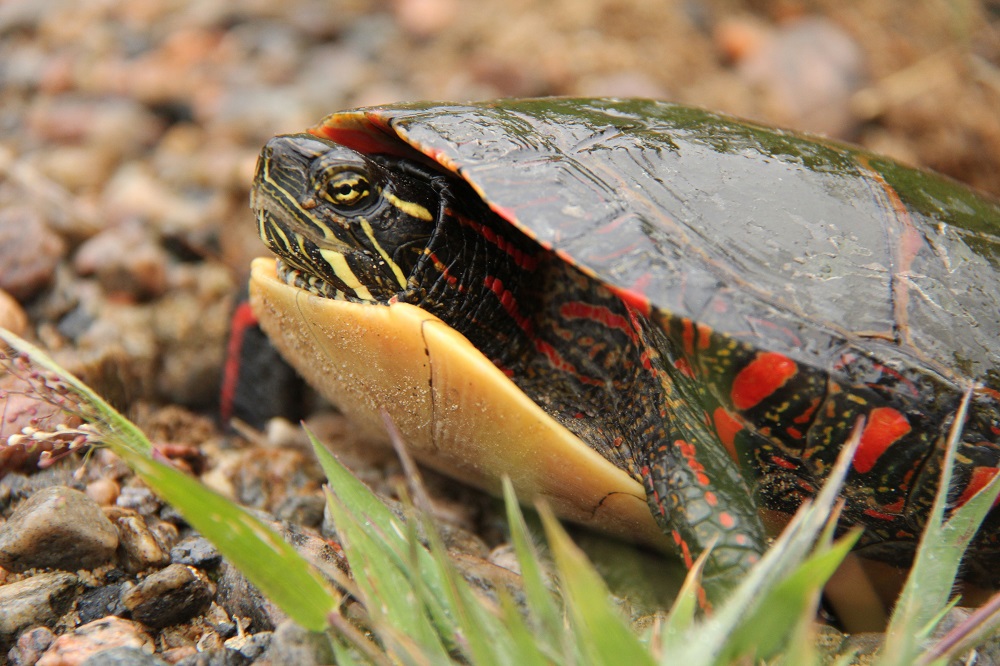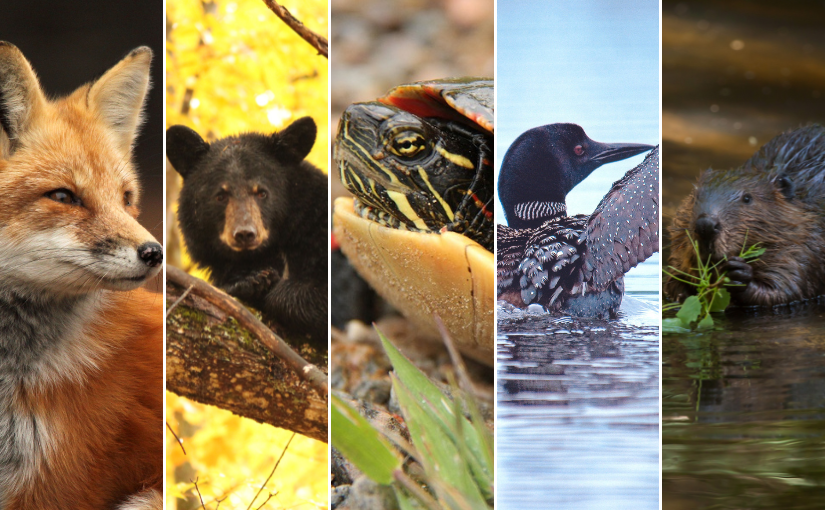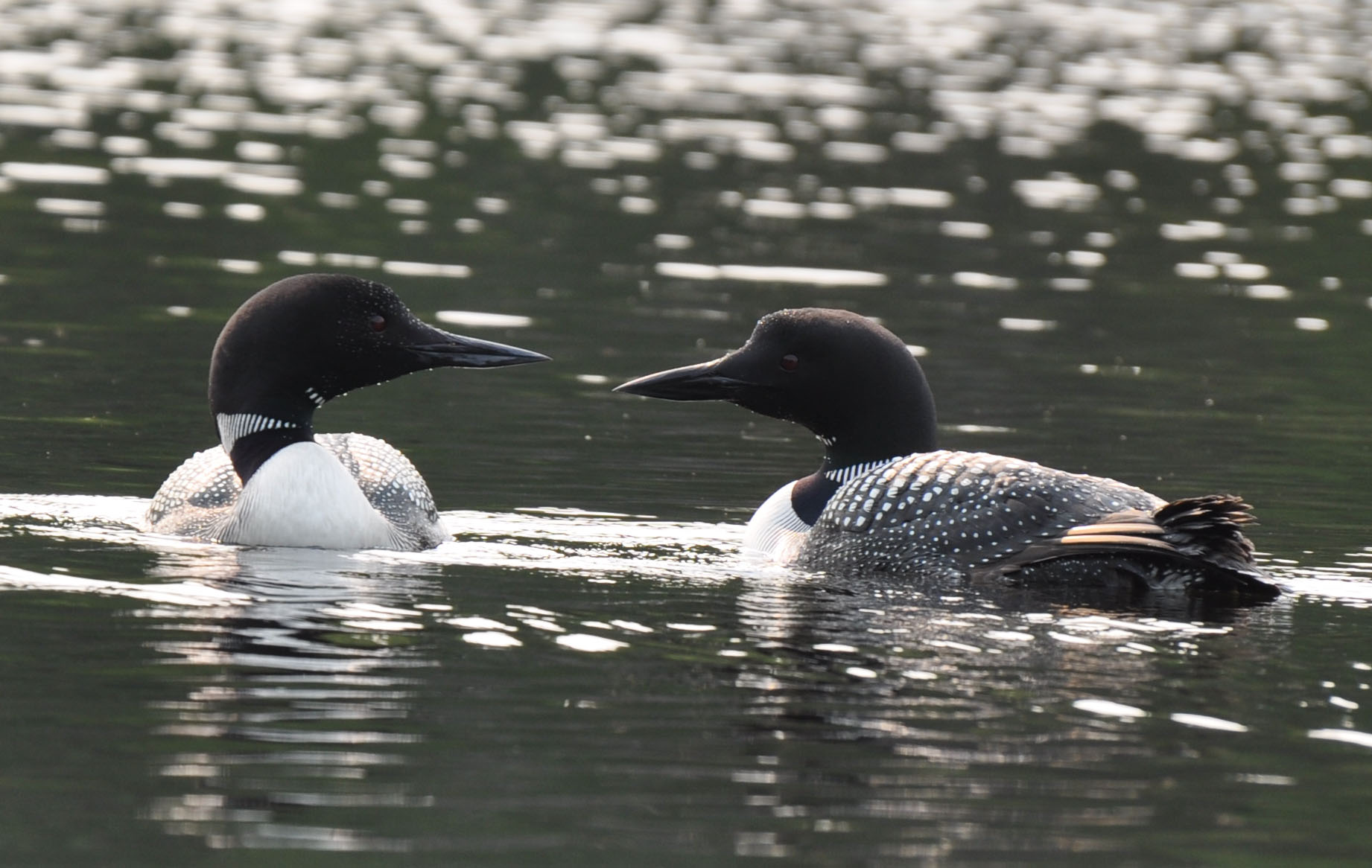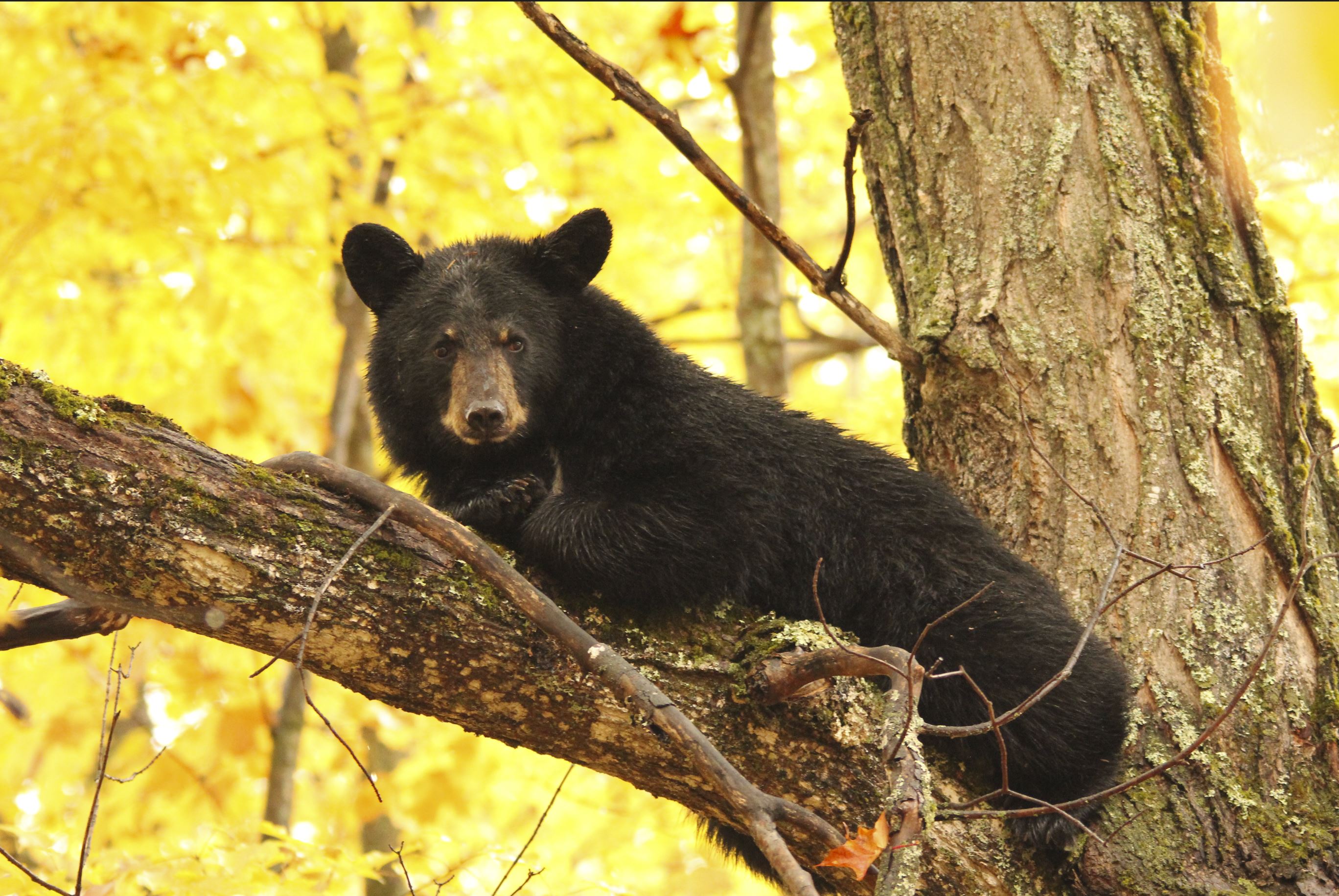Today’s blog was written by Ontario Parks Social Media Assistant Sonia Dharni.
April is here and it’s National Stress Awareness Month.
With constant notifications and never-ending tasks, it’s easy to forget the simple joys and timeless wisdom that nature offers.
Digital alerts fill our ears, while the cheerful song of the birds and the soothing sound of a breeze through the trees become an afterthought.
We could learn a lesson or two from nature – especially from wildlife. By observing and understanding how animals navigate challenges, we can discover strategies for managing stress in our own lives.
Here are five lessons from Ontario’s wildlife that can help reduce stress:
The loon’s confidence: navigate conflict with grace
Loons excel in communication and are powerful reminders of the importance of solitude, introspection, and quiet contemplation.
While generally peaceful, loons aren’t afraid to show aggression if they feel threatened. Like loons, who use their “laugh” or tremolo call to express alarm or assert territorial claims, we can learn to assert ourselves calmly in stressful situations.
By acknowledging and addressing challenges confidently, we can navigate through stress with resilience and composure, much like the graceful movements of the loon on the water!
Standing up for yourself and advocating for your needs and wants is an essential aspect of self care. These actions promote healthy boundaries, which is key in reducing stress and improving overall wellbeing.
The beaver’s resilient work ethic: build, but don’t burn out
Beavers teach us the value of hard work and the importance of a strong work ethic. If you’ve ever watched a beaver build a dam, then you know it’s like watching a master architect at work!
Like a beaver carefully constructs its dam, we can approach our tasks with determination and creativity, knowing that each effort contributes to something meaningful.
Identify significant projects or activities, and turn stress into productive energy. For example, you can start a nature-inspired project, such as a nature journal, building a bat box, or creating a wildlife friendly garden!
Beavers also pause to rest, groom themselves, and socialize. These breaks are essential to maintain their energy levels and sustain their hard work over time.
Remember: you call the shots when it comes to your well-being! Feel free to take breaks when needed, especially if you’ve been a “busy beaver” lately.
The Black Bear’s cozy retreat: sleep your worries away
Feeling like you could use a bear-sized nap? Take a cue from the Black Bear and find a cozy nook to recharge!
We benefit immensely from quality sleep and regular periods of rest. Just as bears retreat to their cozy dens for hibernation, finding moments of downtime is crucial for managing stress.
Try a regular dose of camping for extra sleep benefits. Sleeping away from artificial light and waking up with natural sunlight can reset your circadian rhythm, which will help you feel refreshed.
You can also create a cozy retreat for yourself. This may involve a quiet hike, reading by the lake, or finding a peaceful spot in the park to unwind.
Don’t forget the snacks! Bears rarely turn down a snack, and neither should you if that’s what your body needs. Fuel up!
(Note: Please store your food and other wildlife attractants responsibly and remember to be a Bear Wise visitor in parks.)
The fox’s playful agility: incorporate play into your day
When was the last time you had a chance to play?
Foxes don’t shy away from fun, frolicking with infectious joy as they chase each other through the meadows.
Watching these agile creatures engage in playful antics offers valuable insights into the importance of incorporating play into our lives. Adding play to your routine can help foster a light-hearted spirit that can ease tension and elevate your mood.
Try incorporating moments of play during your park visit – make observations using iNaturalist, participate in nature photography, engage in a nature scavenger hunt, or simply revel in the joy of exploring the outdoors!
Playfulness can extend to hiking, paddling, fishing, swimming, cycling, and forest bathing.
The Midland Painted Turtle’s steady persistence: practice patience
Midland Painted Turtles embody the virtues of patience.
These ancient reptiles calmly navigate their environment, taking their time to observe and adapt to changes. The natural world is a refuge from the hurriedness of everyday life.

Like a Midland Painted Turtle slowly and steadily moves towards its goals, we can embrace a patient approach to facing life’s challenges when tackling a difficult task, overcoming a personal obstacle, or working towards a long-term goal.
Every step forward, no matter how small, brings us closer to our destination.
(And if you really want to slow down, why not live on “camp time?”)
Which lesson resonates with you the most?
By embracing these lessons from wildlife, we can reduce stress and rediscover the magic of life’s little pleasures.
Remember: stress reduction is not just a goal, but a journey guided by the timeless teachings of our wild companions!




